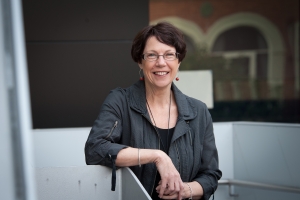Osteoporosis - don't shrug it off!
Research news
The latest research at Deakin shows that osteoporosis should not be shrugged off!
Affecting over 1.2 million Australians, osteoporosis is under-appreciated and should be taken more seriously, both by the medical profession and the general public, argues Deakin’s Professor of Epidemiology and Head of the Epi-Centre for Healthy Ageing, Julie Pasco.
“Osteoporosis is a silent disease,” said Professor Pasco. “In our latest research, we found that, after measuring bone mineral density, only about one third of people who have osteoporosis realise they have it.”
“This has implications for treatment, increases risk of fractures, and could potentially shorten people’s lives,” she said.
Professor Pasco is Deputy Director of Deakin’s IMPACT Strategic Research Centre, which focusses on understanding, treating and preventing psychiatric, musculoskeletal, metabolic and other disorders.
She and her team at IMPACT have just completed a research project that involved studying 1750 participants from the Geelong Osteoporosis Study. This long-term study was set up in the late ‘90s and is providing a treasure trove of data for researchers seeking to understand a range of health and social issues.
Study participants visit the research centre at Barwon Health every few years to have their health monitored and have a bone mineral density scan. Ages span from 20 to 96, with a range of body builds and fitness levels, reflecting the diversity that exists in the community.
Professor Pasco was involved in setting up the Geelong Osteoporosis Study, which, she says, is unique and will lead to improved practices across Australia and overseas. “That is what makes the Geelong Osteoporosis Study so special,” she said.
Osteoporosis is a chronic, progressive disease that causes people’s bones to gradually become weaker, making patients more susceptible to fragility fractures of the bones.
It can be diagnosed through bone mineral density assessment and can be controlled, either through lifestyle changes, such as reducing alcohol intake, stopping smoking, and maintaining adequate levels of calcium and Vitamin D, or, if symptoms are more serious, through medication.
Professor Pasco said that because osteoporosis does not initially cause any symptoms, people are unlikely to know they have it for many years. Also, generally, people tend not to rank the disease as seriously as other conditions affecting older people, which is why many don’t seek diagnosis, even after they have a fracture, or follow through with treatments once osteoporosis has been diagnosed.
“It seems less important than diabetes, heart disease or other conditions faced by older people,” she said. “However, the consequences of osteoporosis can be serious. If people sustain a fracture, especially a hip fracture, there are increased rates of morbidity (ill health) and mortality.
“Fractures, especially of the hip, can lead to loss of independence and confidence, and create a downward spiral. A high proportion of people who suffer hip fractures don’t ever regain their pre-fracture mobility or health status.”
Professor Pasco said that women are three times more likely than men to acquire osteoporosis, but men who suffer a hip fracture tend to be affected more strongly, with potentially higher mortality rates.
She added that her research shows that physician’s beliefs and attitudes towards osteoporosis, compared to other diseases, tend to be more ambivalent, and greater education for practitioners and the public is needed to improve outcomes.
The next step of the project will involve determining how best to inform the public about recommended guidelines for building healthy bones throughout the life course.
Professor Pasco advises people who believe they are at risk of osteoporosis to discuss the issue with their doctor, including considering having a bone mineral density test. Risk factors for osteoporotic fracture include low dietary calcium or low Vitamin D levels, the use of glucocorticoids, having a parent who has had a hip fracture, or suffering a previous fracture yourself.
The latest research has just been published in the “Journal of Clinical Densitometry”.
Share this story
 Professor Julie Pasco
Professor Julie Pasco
